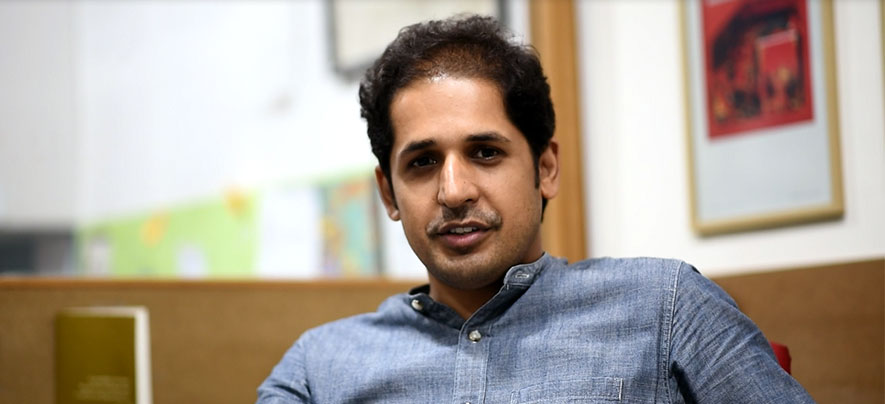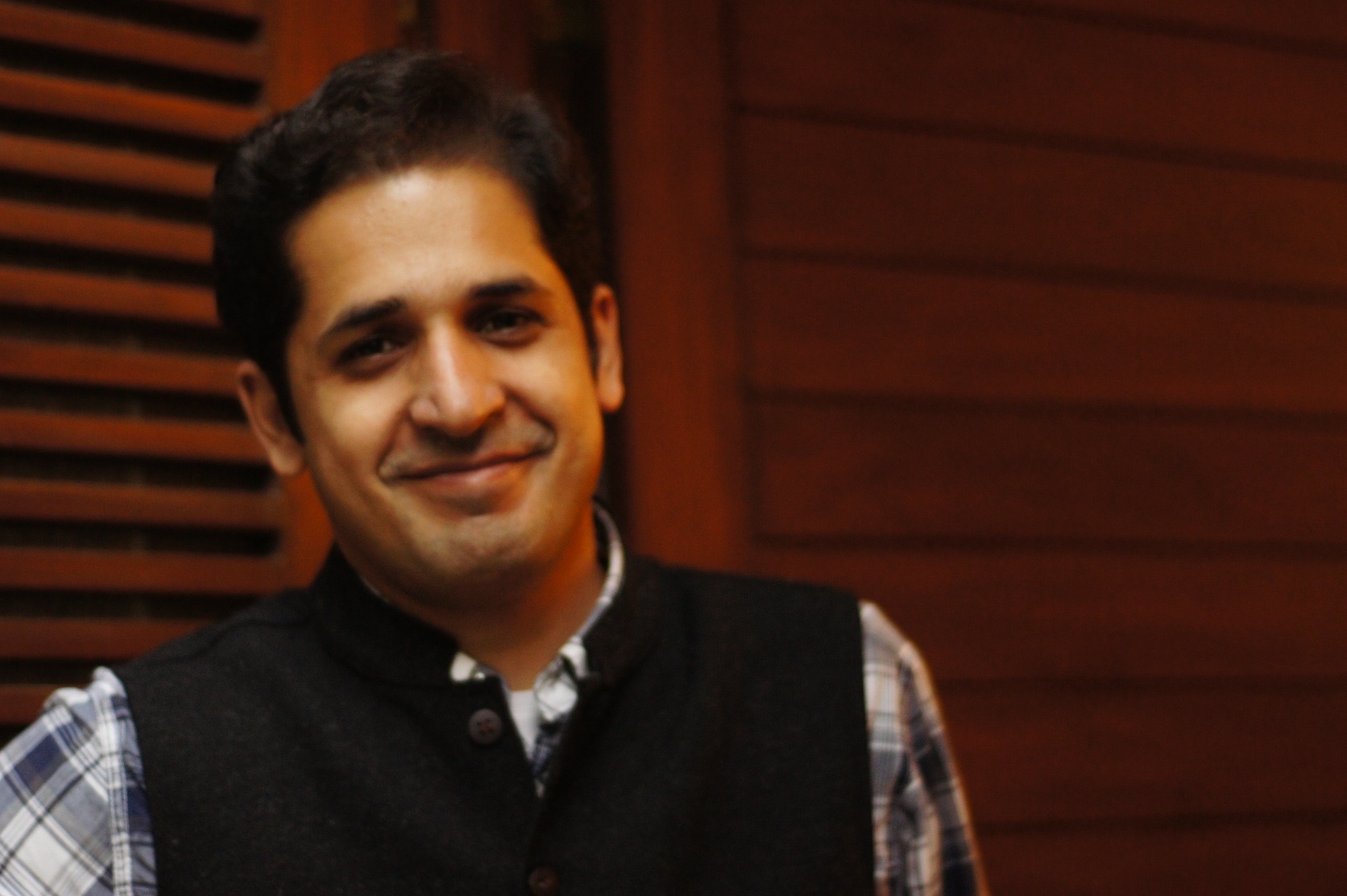This architect is on a quest to build zero energy buildings
SME Inspirations
462 week ago — 10 min read
Entrepreneurs are essentially architects of their dreams. Meet Amit Khanna, an accomplished architect whose raison d'être is to create a body of work that is collaborative in its conception & implementation; deeply harmonious with its surroundings and intrinsically sustainable in nature. Amit established AKDA (Amit Khanna Design Associates) twelve years back in the capital and his firm has had a successful run of designing and constructing more than a 100 projects.
A graduate of School of Planning & Architecture (SPA) and with a Masters in Sustainable Urban Development from Oxford, Amit is one of those rare breed of architects who is humble enough to admit that the construction worker on site perhaps has more knowledge about building than most architects. Therefore, he believes that the process of creating an edifice should at its very core be collaborative in nature. Amit was recently chosen as one of the top 50 emerging architects in the country. Apart from running a successful architectural firm, Amit teaches at his alma mater SPA, writes extensively on design and innovation and is a frequent speaker at industry events.
In conversation with GlobalLinker (GL), Amit Khanna (AK) traces the evolution of AKDA and the challenges and learnings along the way. Watch this video to know more about his entrepreneurial journey.
GL: Tell us about your business & how it came into being.
AK: I established my architectural firm, AKDA 12 year ago. From a very young age I was drawn to architecture. I grew up in Nairobi and I had an uncle there who was an architect. In my mind, he had a very interesting life, so I always wanted to become an architect like him. When I found my way back to India, like all young kids I applied everywhere, and gained admission into engineering, journalism & BBA. I actually did two weeks of journalism before I joined SPA to become an architect.
I graduated in 2002 and worked briefly for an architectural firm. But I think architecture is a profession that you only truly succeed in if you are working for yourself. So 12 years ago I started this firm and I did take out the time to get my Masters in Sustainable Urban Development from the University of Oxford.
This really isn’t a family business for us -- my father worked for the government. And it was sort of unusual in our family to become an entrepreneur, much less an architect, the standard thing to do to was to either become an engineer or a doctor and there was a lot of pressure to become only one of those two things. So in a way the decision to be an architect was rather off the beaten track.
GL: What is the USP of your business?
AK: Architecture tends to be perceived as a client-driven business. But, unfortunately that reduces the role of the architect to just a provider. What we do here is that we try and design from first principles. To explain, the normal perception when you think of an architect is that the architect is a master of all the trades that happen at a building site. Unfortunately, the reverse is actually true -- people who build buildings know how to build better than most architects.
What we try and do at this firm is that we try and learn from the people who actually build our buildings. So we don’t have a master architect approach towards design, rather we have a very open collaborative approach towards design. Because we realise that we don’t need to imitate ourselves in every building, we are comfortable with other people dictating the process. This collaborative approach to design is our USP.
GL: What are some of the challenges you have faced in your field?
AK: One of the major issues with construction in India is that it is a highly disorganised industry. You have a large number of people in the industry, but the skills don’t remain in the industry. So you have a lot of migrant labor that does occasional building work but the skills they learn are not passed on from one generation to another.
There is no great capacity for high quality construction in India. That is a very serious challenge and it percolates down to all levels of construction. Therefore, if I want to specify that the building needs to be built in a certain way, I cannot, because the backend of the industry doesn’t exist. For instance, if I require a specification of an aluminum facade which has different surface levels, I have to end up doing some sort of jugaad in order to get this done. There is no other way to achieve that, there is no manufacturer that I can go to, there is no government specification that says it needs to be done in a certain way. All of that exists on paper but the real industry capacity does not exist.
GL: How big is your team and how do you keep them motivated?
AK: We are a boutique firm and we don’t like to expand to a scale where it becomes unmanageably corporate. We like to focus on doing high quality work, so we limit ourselves to about 10 people. We did expand for a time in the middle and then it got out of hand. So now we are back to something that I am comfortable with.
We are happiest doing design-centric buildings -- so we do schools, high-end houses, and a lot of commercial work. What we tend not to do are generic buildings as such. So everything we do is highly customised, very design-centric.
I think a key part of keeping young architects engaged in what they are doing is to allow them the freedom to do what they want. Like I said earlier we are not a master architect sort of organisation were one person is taking all the decisions and the other people are just running around, producing the work that the big guy wants.
For instance, we recently built a house not far from the Delhi and the challenge was that we had a client who couldn’t spend more than 1000 rupees/sq ft on this house. It wasn’t really a profitable project for us but we took it on simply to see whether it to could be done. We had this young architect interning with us and she spent about 6 months developing that house. We were able to actually build the house, within the specified budget without compromising on aesthetics or quality.
And that sort of thing really motivates the team because everybody wants to do interesting work at the end of the day.
GL: What is your big business dream?
AK: If you were to ask me if 10 years from now would I still be making buildings, the way we are making today, it would be very heart-breaking if I had to say ‘yes’. Because the way we are making buildings today is deeply unsustainable. We waste a lot of material, our building aren’t as energy efficient as they should be.
If we could build a zero energy building within the next few years, a building that consumes the same amount of energy that its produces, that I believe would be a great achievement. All the decisions that we take in this firm are geared towards making this vision a reality.
The technology exists but we are not able to convert that into reality. So, yes, if I could build a building 10 years from now that is truly a zero energy building, that would be something to look forward to.
GL: How important do you think GlobalLinker is in assisting SMEs?
AK: I think a platform like GlobalLinker works because we are all using a similar product so we know it’s a trustworthy network. It’s a platform where entrepreneurs can easily talk to others in terms of issues surrounding their work or even in terms of cross-pollinating opportunities. For example, if I am an architect and I need to interact with somebody who is providing vendor-based services for making buildings, if I could get on to GlobalLinker and figure out who is doing this, that would be great.
One of the challenges of working in an entrepreneurial set-up like ours is that you don’t have ready solutions for all of your problems. For instance if you want to source something which is not part of the normal trade, GlobalLinker could be the go-to network that you can tap into and people may be driven to produce innovative solutions for you, because they know that you are also operating within the same realm as they are. I see a huge opportunity for a platform like GlobalLinker to assist & enable SME growth.
GL: What is your advice to aspiring entrepreneurs?
AK: Start early and don’t get scared. If I had to go back and restart my business at 25 and I knew how hard it was going to be I would never do it again. The fact that you don’t know how hard it is going to be is a great plus…so you should always start as early as you can.
Also it’s very important to build a competent team. When I started out I was 25. We rode the economic boom & we got to build 100 buildings in 10 years, something that no young architect of my age could imagine that they would be doing outside this country. We got the opportunity to build a 60,000 sq.ft. office building, when I was about 2 years into the industry. My first employee was exactly twice my age and he was 52 years old at the time. He helped me build that building and without him I would have struggled. Incidentally he is still part of our team. I realised early on that hiring smart people who are sometimes more expensive is essential. You need to surround yourself with capable people and only then will you grow.
Disclaimer: This article is based solely on the inputs shared by the featured member. GlobalLinker does not necessarily endorse the views, opinions & facts stated by the member.
Posted by
GlobalLinker StaffWe are a team of experienced industry professionals committed to sharing our knowledge and skills with small & medium enterprises.
Network with SMEs mentioned in this article
View GlobalLinker 's profile
Most read this week












Comments
Share this content
Please login or Register to join the discussion